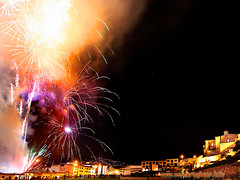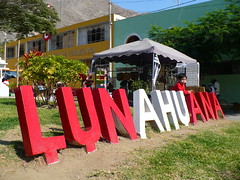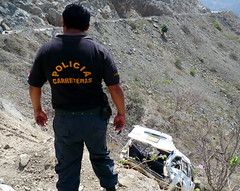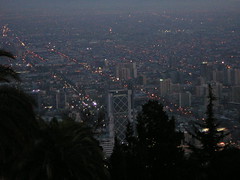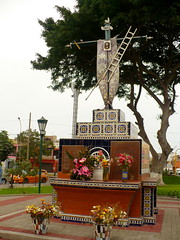Day of the Dead in Peru
By Maureen Santucci
While kids back home in the States are waiting with bated breath to be able to accost their neighbors for candy and eat themselves silly, Halloween is not as widely celebrated in the rest of the world. In Peru, it has only recently become celebrated at all. Here, as with the rest of Latin America, the focus is on the Day of the Dead.

ANDINA/Carlos Lezama 01/11/2011
The Day of the Dead or, as it is often known here, El Día de los Difuntos (Day of the Departed), is not quite as important a celebration as it is in Mexico. Nonetheless, it is a key time for families to pay homage to their departed relatives.
Most countries in Latin America had a history of honoring their ancestors long before the Spanish showed up. In Peru, people were mummified and these mummies might be taken on processions at certain times and offered food and drink. While this practice disappeared with the advent of Catholicism, it has been replaced by the customs surrounding November 1 and 2nd.
In the outlying areas, the celebration can be extremely festive, almost like a birthday party. Often, a special meal will be made of all the departed’s favorite foods on the 1st, with the first and largest plate being placed on a type of shrine. Along with the food will be the person’s favorite drink and small models of the things they wanted or enjoyed in life. In addition to favorite foods, the traditional ones at this time are lechon, tamales and a special bread.
On the 2nd, the families will go to the cemeteries to continue the celebration with food, drinks and music. The most important part of all of this, however, is to talk about the people being remembered and what made them special.
In some areas of Peru, there are still communities that go to the cemetery on the night of the 1st, with the belief that the dead will rise from their graves at midnight to partake in the feast. They may even choose to stay at the cemetery all night, continuing the party throughout the following day.

ANDINA/Carlos Lezama 01/11/2011
In the cities, the party is a bit more reserved and typically involves visiting the cemetery with offerings. This can include flowers, food, drink and miniatures, as well as playing their favorite music. In the city cemeteries, there are often rows of elevated graves where the grave is set into a wall with a niche in front.
Within this niche can be placed these items as well as any other remembrances of the departed. While this may be done at any time throughout the year, there’s no question that November 1st and 2nd are held in higher importance.

ANDINA/Carlos Lezama 01/11/2011
Planning your trip? Book your Peru travel package in advance to get the best deals and browse this range of Machu Picchu trips for inspiration.
Tags: cemetery




